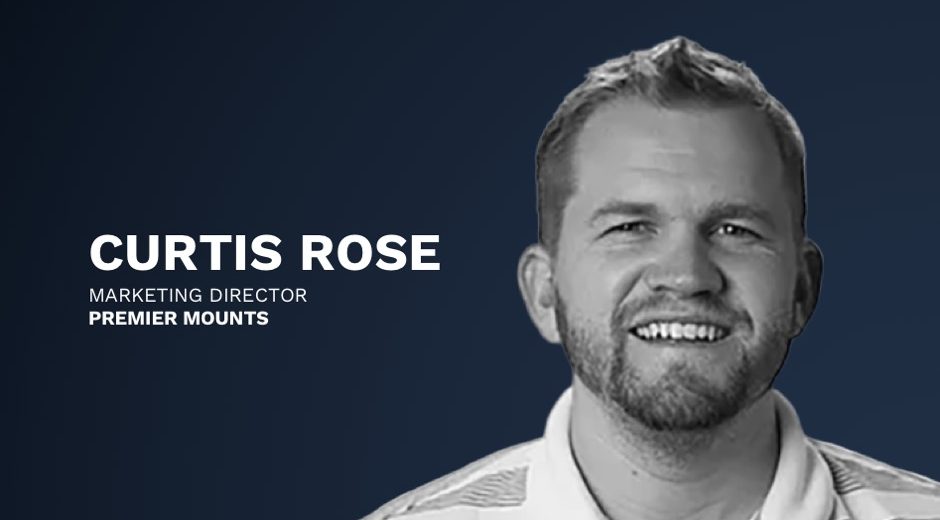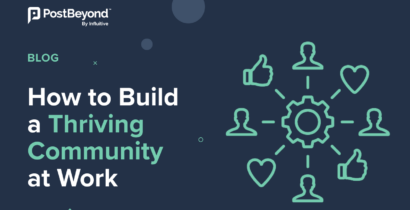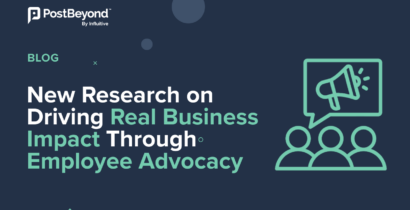The relationship between marketing and sales can be a difficult dynamic. The best sales and marketing collaborations treat their relationship as a partnership with the same goal and not as competing departments.
Premier Mounts manufactures mounts, carts, adapters, and accessories for the audio/visual (A/V) industry. They’re an agile company looking to find ways to share content across their social networks. In a relatively young generation that serves an older generation, the best way to engage their audience is through their own sales team. The marketing team at Premier Mounts set an intense focus on improving their content marketing and social media savviness.
For Curtis Rose, the Marketing Director at Premier Mounts, the key for great sales and marketing alignment is trust. He focused on building trust with his sales leaders and reps by ensuring his marketing efforts always deliver value. As he continues to build and shape the marketing vision in his company, his sales team knows that every initiative or piece of content the marketing team creates has a purpose and is focused on making the sales team’s job easier.
The same trust he has built with his sales team is also the cornerstone to a well-managed employee advocacy program. Discover how Curtis effectively aligns marketing and sales for employee advocacy and engages his sales team to share content through gamification.
Q: Why think about employee advocacy at all in your company?
We were looking at ways to get our content out there. In our industry, content is relatively a new thing as far as content creation and frequency goes. This is also the same with social media. Now, social media is really picking up which was still in its early infancy. Knowing this, we’ve had an intense focus on content and social media, wanting to figure out the best ways to distribute.
Our industry demographics favor the older generation, with the ages of 40 to 59 making up 60% of our industry. Because of this, trying to get them to interact with us on Instagram is a little difficult. However, we’ve found one of the best ways is to leverage our salespeople who already have these relationships built and are connected with all these people, primarily on LinkedIn and Facebook. Generally, people would rather read content coming from an individual instead of an organization.
Q: What was the conversation like with your sales team when asking them to share content?
Our organization has really bought into the vision I created for marketing. Some of them were already active on social media, while others weren’t. After talking with them during a meeting, we approached it as an avenue for them to create more sales opportunities.
We’re providing content that you can share with your prospects that will promote our brand, which could potentially lead to more sales for you. It could also position you as someone who is knowledgeable about the industry.
Because of the way we framed it, they saw it as an opportunity to create more sales and promote themselves as leaders in the industry. It was fairly seamless as far as them wanting to adopt the platform.
Q: What advice would you give to marketers who are trying to get employees to buy into their vision?
I spent a lot of time developing the trust of my management, and especially of the sales team. I think one of the easiest ways to get buy-in with sales is to really build trust, so they know you’re not creating content just to create content.
Sales perceive marketing in a very interesting way, but because I was able to build trust with them, they knew anything I put out there was done for a reason. Many of the strategies and ideas we come up with are to ultimately help them sell better. This happened through some of the initiatives we did, but also just getting to know them. I spend time with our sales reps at tradeshows and at events developing the trust so they follow the vision.
Q: How has leadership impacted your employee advocacy program?
Our CEO is in his late 70s, so a lot of it comes from his trust of me. Our Head of Sales is very social media savvy, and she has seen the direct results of sharing content from PostBeyond, which have turned into opportunities for her. We’ll post content such as case studies and people will comment about upcoming projects, leading to opportunities. When you have tangible results like that, it definitely helps leaders buy-in because that’s what they’re looking for.
Q: How do your sales reps leverage the leaderboard?
We wanted to make sure the leaderboard was more of a competition. Salespeople are all about competition, beating each other and hitting their numbers. So we thought, “why can’t we fit an employee advocacy program into a sales mentality?” The first thing we did was to have the leaderboard on the TV in the office along with company metrics. It incentivized people to beat each other for the top.
Now we encourage people to get a certain level of points value in a given time period, which is usually one or two months, depending on what events we have because we target around those. They get entered into a drawing for giveaways with different prizes for hitting various values.
Early on, we ranked by how much content you shared, which equated to points. However, we found that didn’t work as well. Some people ranked at the bottom felt they were never going to get the top prizes because their networks weren’t big enough.
Implementing this new system with a point threshold that’s doable for at least 40% of the organization actually helped us grow our participation. People felt like they could reach a slight stretch rather than a long stretch. I swear, every two weeks I’m copied on an email where the sales reps are bragging to each other, “Hey did you notice I’m on top? You all need to step it up!” So I don’t need to drive people to share content. They’re driving each other just from their competitive nature.
Q: What are the outcomes for a sales team?
The sales reps get to grow their own personal brand, outside of just the company brand, which I’m a fan of. People will trust their knowledge no matter where they are. Right now they’re at Premier Mounts, so they’re going to trust what they say here and we can benefit from that knowledge.
They see a direct result to their sales just by people commenting and the interest people are showing. They know sharing content can turn into opportunities – some of it immediately, some of it long term. They think it helps them build relationships with customers as well.
Q: What are the outcomes for marketers?
We get a platform that gives us a fantastic ROI for the investment made and the return with having our sales team share content. We’re not going to reach all the people through our current channels and efforts. We don’t get access to some of these people on our own. With employee advocacy, our reach expands significantly, and we can prove that through our earned media value. One of our core marketing metrics that we track is the earned media value from PostBeyond, and we’re on track for 5x our ROI.
Q: What advice would you give marketers who are looking to implement an employee advocacy program?
It all comes down to content. You don’t want to walk into an employee advocacy program without knowing you can produce a certain level of content and a certain quality of content – that has to be the cornerstone.
We’re still learning and refining, but we know that the content we’re producing is stuff that people want to hear and it starts with that. Develop your content strategy first. That makes your entire employee advocacy program much easier and does the work on its own if you have high-quality content.





